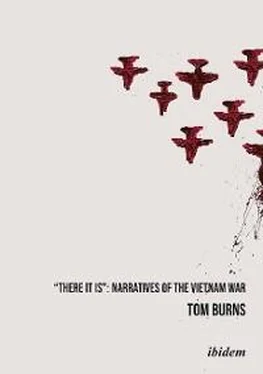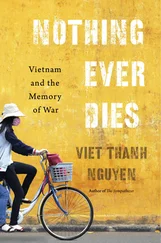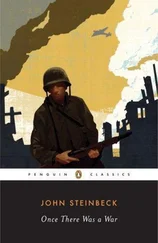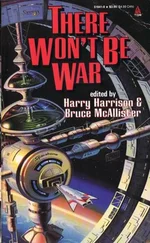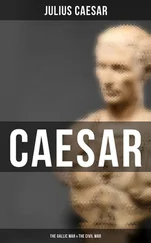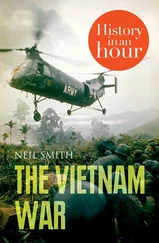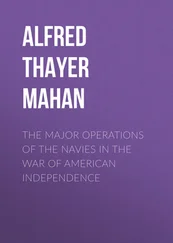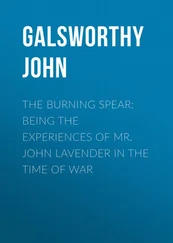The imbalance of power in Vietnam was therefore evident by 1954, when the Viet Minh had military and political control of most of Vietnam. During the chaotic situation following the defeat of the French and the migration southward of Catholics and non-Communists after the division of the country into north and south, the southern leader Ngo Dinh Diem, who would be the future President of South Vietnam, barely controlled the capital city of Saigon, much less the rest of the country. 1American leaders reasoned that an expert in dealing with Asian Communist revolutionaries might therefore be useful to the beleaguered Diem. This expert turned out to be the most important of the early American adventurers: Edward G(eary) Landsdale, an Air Force Lieutenant-Colonel on loan to the CIA. Landsdale was both instrumental in convincing President Eisenhower that the US should support South Vietnam against an imminent Communist take-over and indispensable in maintaining Diem, or, to give him his full name, Jean Baptiste Ngo Dinh Diem, in power. With American support, Premier and Defense Minister Diem eventually deposed Bao Dai and adopted his imperial flag.
Landsdale arrived in Vietnam on June 1, 1954, the day the Viet Minh celebrated their victory over the French by blowing up an ammunition dump, and (as he noted himself) “rocking Saigon throughout the night.” 2Landsdale came to Saigon to command the top-secret Saigon Military Mission (SMM), to install resistance teams in the north to delay the consolidation of that part of the country while he supported the non-Communist government in the south. By the time of the Geneva deadline prohibiting the introduction of additional military personnel into either side of the country, Landsdale’s teams were already active in paramilitary operations and psychological warfare, perpetrating acts of sabotage and spreading misinformation in both north and south. They were unsuccessful in the areas held by the Viet Minh, however, and many of Landsdale’s Vietnamese agents in the north actually defected to that side.
The sabotage activities included destroying government printing-presses and pouring contaminants into bus motors to undermine the transportation system. Misinformation included the distribution of leaflets about harsh government measures in the north, and a successful rumor campaign that the US would support a new war against the north employing atomic weapons, a rumor that greatly added to the flow of refugees to the south, many of whom, already encouraged by the Roman Catholic hierarchy and organized by Landsdale’s teams, were transported in US Navy ships to the south. 3Thus began the exodus of one million Catholics, which is fictionalized in M.J. Bosse’s novel, The Journey of Tao Kim Nam , discussed in section iv, below.
Landsdale was one of those men of action, usually described as “legendary” or “flamboyant,” who seem as fantastic as any fictional character, an example of the type that novelist Philip Roth once complained about: a real person that would be the envy of any novelist. Roth’s question “Can anybody have imagined him if he did not really exist?” referred to Richard Nixon, but it is, if anything, more pertinent to Landsdale, who inspired more than one fictional character in the early literature of the war (cf. sections ii, iv and v, below) and was far more influential in supporting the American effort in Vietnam than any of his fictional counterparts. After retiring from the Air Force in 1963, with the rank of Major General, he returned to Saigon in 1965 as “special assistant for pacification under [Ambassador Henry Cabot] Lodge.” 4
Landsdale was born in 1908 and educated at UCLA. He served in the OSS, the predecessor of the CIA, during World War II and later went to the Philippines as counsel to the Philippine Defense Secretary, Ramon Magsaysay, whom he aided in the successful counter-revolutionary repression of the Communist Hukbalahap insurgency, and later helped to become president. Landsdale is said to have developed “the basic concept that Communist revolution [was] best opposed by democratic revolution,” and, with his success in the Philippines he was accordingly sent to South Vietnam as a CIA operative in 1954, where he urged the development of a counterinsurgency force instead of a conventional army (he also “reportedly helped develop the US Special Forces,” which arose as a counter-insurgency force within the US Army). 5He is described in The Pentagon Papers as “well-known but mysterious” and “reticent about his role.” 6
Besides his skills in unconventional warfare, Landsdale was evidently a man who could gain the friendship and confidence of Asian leaders. It was his intention to make Diem a progressive, non-Communist national hero on the model of Magsaysay and turn the Vietnam of the Sixties into a Philippines of the Fifties, and he was sent to Vietnam by John Foster Dulles explicitly with that mission. 7The difficulty with this plan was that the two Asian countries were very different. It was unrealistic to think that Landsdale would be as successful in Vietnam as he had been in the Philippines, a former American colony that had granted long leases to US military bases in exchange for independence in 1946. As Neil Sheehan points out, the Philippines was a 95% Christian country that had already been westernized and Americanized for almost half a century:
Landsdale’s Filipinos were Brown Americans...their Independence Day was the Fourth of July. They spoke English with a slightly out-of-date American slang. They liked jazz and much else in American popular culture...They staged operations against the Huks with names like Four Roses, for their favourite whiskey, and Omaha, after the D-Day beachhead at Normandy. The CIA was notorious for hiring Filipinos to staff its Asian operations because they were so Americanized. 8
As for the Vietnamese people, on the other hand, “[i]t was not patriotic in Vietnam to collaborate with the Americans. To many Vietnamese, the Americans stood for colonialism, oppression, and social injustice.” 9And the leaders of the two countries could not have been more different: the deeply suspicious, autocratic, and unpopular Diem was nothing like the honest, charismatic Magsaysay. 10
Landsdale, nevertheless, was a tireless defender of what he hoped would be a popular “Third Force” government in South Vietnam, neither colonialist nor Communist. Although he was ultimately unsuccessful in persuading the arrogant Diem to personify the Third Force ideal, he did become Diem’s best American friend (he actually lived in the presidential palace), mentor, and champion, indispensable for keeping the Diem regime in power. In November 1954, for example, Landsdale “single-handedly” prevented a coup d’état of Bao Dai’s officers. 11He contradicted Eisenhower’s new Ambassador to South Vietnam, General Lawton Collins, who advised the president that Diem should compromise with the powerful Cao Dai and Hoa Hao religious sects that Diem had grossly mishandled. Landsdale urged Diem rather to use bribery and trickery, and only in the last resort, violence (the two sects had private armies), and he promised the aid of an auxiliary military force to do so. In 1955, he “masterminded” the campaign that subdued the military arms of the sects. 12
General Collins distrusted Landsdale, whom he called a “romantic visionary” (and informally “that crazy bastard”) and regarded his protégé, Diem, as a “crank,” and he urged Dulles to get rid of them both and resume cooperation with the French. 13By April 1955, Dulles was ready to dump Diem, as the French also desired, but Landsdale lied to Diem about Dulles’s intention to replace him, believing that Diem could do the job. The French, who still had 75,000 troops in South Vietnam, did not intervene for fear of upsetting the US, but they supported the sects clandestinely in order to oppose Diem, a situation that is fictionalized in Jean Latérguy’s novel Yellow Fever (1962), discussed in section v, below.
Читать дальше
